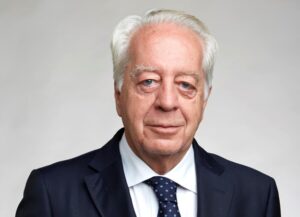TULLIO POZZAN – A PERSONAL APPRECIATION FROM OUR CHAIRMAN, MARTIN THOMAS

Tullio Pozzan
Tullio Pozzan was a man of many accomplishments, which for anyone who didn’t have the pleasure of knowing him, this obituary makes very clear. However, with such people even relatively trifling actions that wouldn’t normally be remembered can make quite a difference to others, so I’m writing this because one such action made a huge difference to Cairn.
What happened was that towards the end of the 1980s, Tullio wanted to buy a fluorescence photometry system, and he ended up coming to us for it, even though it didn’t properly exist yet! This came about because I had become known in scientific circles for my postdoctoral work in Boston on optical absorbance indicators, after which I wanted to return to the UK, but for which I needed a suitable opportunity. As I have remarked before, at least in those days in the UK, people seemed to be marked down if they appeared to be more interested in the technical rather than the experimental aspects of scientific research. For that I was clearly suspect, as I had built all the equipment for that research myself!
So instead of an academic position, and also as related before, I took up an appointment at the Shell Research laboratories in Kent, which had had a very solid research background, and appeared to offer some rather exciting opportunities. Except that in practice the place most certainly didn’t, and instead I needed to leave a sinking ship before I went down with it. So that’s why I started Cairn, initially as a spare time operation in order to finance it, but I was keen to develop it into a proper business (for which I guess the jury is still out, but I’ve always tried my best!).
Well, it turned out that the equipment I’d developed for those absorbance measurements (and which used a spinning filter wheel for rapid wavelength changing) could easily be adapted for fluorescence, so I potentially had a ready market for what became our modular fluorescence photometery system, and which we are still making today! Our first customer, for what was admittedly a rather basic setup, was David Eisner now in Manchester but who was then working in London, but I was keen to develop it further.
This is where Tullio came in! He knew of me from my Boston work, and a now long-defunct Company had just been involved in selling him a fluorescence spectrophotometer. I’m not sure if it was Tullio himself or that Company who knew of what I had supplied to David, but either way, the Company realised that Tullio was in the market for a complete fluorescence photometry system. I was made appropriately aware of the opportunity, and the Company encouraged me to make the sale, on the basis that they would help me with the further development of the system into a form that they could then sell to others. Tullio was convinced that I knew what I was doing, so he was pleased to place the order, whereas for my part the receipt of his trust as well as his order counted for a very great deal.
In retrospect there is deep irony here, because successive reorganisations at those Shell labs had made it impossible to do anything useful there, whereas now THIS Company was suddenly being reorganised, which meant that in this case I was left having to do everything myself! And it was a valuable order in 1980s money, at over £17,000, so it was quite a financial responsibility to take on. Situations like this tend to be described as “character building”, but the secret seems to be just to get on with it and not worry too much. So that’s what I did.
The order was eventually shipped, albeit after time for only the most rudimentary testing, and I then went over to his lab in Padova (which the British tend to misspell as Padua for some strange reason) in northern Italy for what I presumed to be the impossible task of actually getting it all to work, but right from the start the omens were good! Tullio began by complaining that that fluorescence spectrophotometer still wasn’t working after several months, but in a way that suggested that in his experience such problems were the rule rather than the exception. Therefore I felt that it should actually be quite ok for me to admit that further visits were likely to be necessary, but it turned out that I didn’t have to. Tullio was accordingly very happy, so all I needed to do was not to appear too surprised, and to enjoy his warm hospitality.
In fact I DID go back, but not until a year later, which was to install a few more accessories, but it was also an opportunity to check everything over and verify that it really was still working. And of course it was also an opportunity to see Tullio once again. I suppose that having a bit of a research background myself might have helped, but these visits were a genuine pleasure, and I always received a friendly greeting on the all-too-rare occasions whenever I saw him again.
But the point of this little tribute is that although I had my work cut out in order to fill this order, I also realised that success here would basically provide the launchpad for going full time with Cairn, which it indeed did. But I have to say I wasn’t entirely pessimistic about my chances, as on the train over to Padova I found myself doing some almost literally back-of-envelope calculations to show that if I did get back out alive, then Cairn really did have a future. And it was Tullio’s trust in what was then our little fledgling Company that was so instrumental in bringing it about. Perhaps such a little thing for him, but so much for us!




